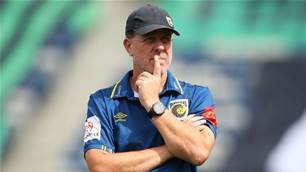Matildas coach Alen Stajcic has presided over one of the most remarkable rises in Australian sporting history – but he isn’t planning to stop with women’s football.
While it would be naïve to place the turnaround fortunes of women’s football in Australia on Stajcic’s shoulders, since the 45-year-old took over the national coaching role, the Matildas have become one of the highest-profile Australian sporting teams – winning the 2017 Tournament of Nations, their first knockout game at a World Cup, rising to a high of fourth in the world and spawning some of the game’s finest contemporary footballers; most notably Sam Kerr.
It’s an upsurge that has not only captured the Australian sporting public’s imagination, but re-evaluated what Australia could expect from the beautiful game. Which is why for Stajcic, the battle has only just begun.
“Around the world, female football is developing at a rapid rate,” Stajcic told The Women’s Game podcast. “It’s going to be a tough challenge for any nation that drops off.
“(The Matildas) have an open door policy for coaches and former players to come in and see how we train - there is a lot of learning available to coaches so they can, and I emphasise, realise the level that is required at the top of the world.
“At the end of the day, at this level, it’s about bringing in quality people who have a lot to give.
“We all have a lot to learn, it’s not really about male or female, it’s about giving people that exposure. That’s the way we’ll raise the standard of football in this country, not just for females but for males as well.”
LISTEN TO THE FULL CHAT HERE
AND SUBSCRIBE ON ITUNES HERE NOW...
Now combatting the weight of expectation, the Matildas face the sternest test of Stajcic’s reign in 2019. At the 2015 World Cup, a quarter-final knockout against Japan was seen as a fantastic achievement. Four years later, it will be the bare minimum.
The side’s stars are now entering a physical and mental peak: Alanna Kennedy has 74 caps at just 23-years-old, while Kerr and Emily van Egmond boast 72 and 82 caps respectively at 25.
Stajcic’s squad boast a plethora of international experience, but, more than ever, face the pressure to perform.
There are now a new set of challenges on the horizon.
“All our younger players have to compete against four or five internationals that come in to every W-League team,” Stajcic said. “A W-League coach is always going to pick the best players.
Related Articles

Stajcic lands Wanderers job as Lederer quits

'We're dreaming': Miracle man Stajcic hunts more scalps













